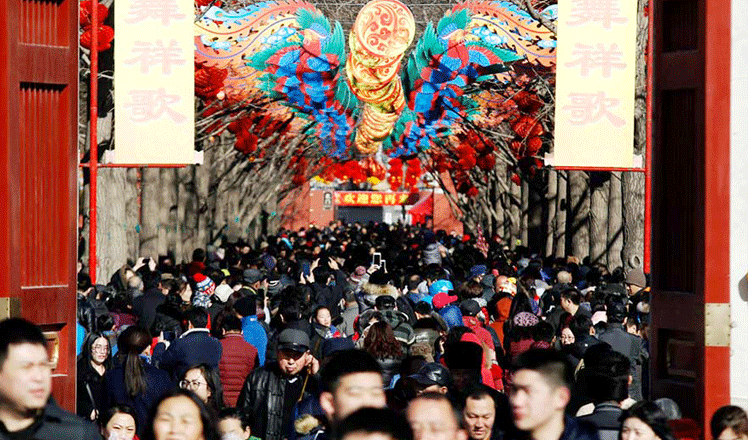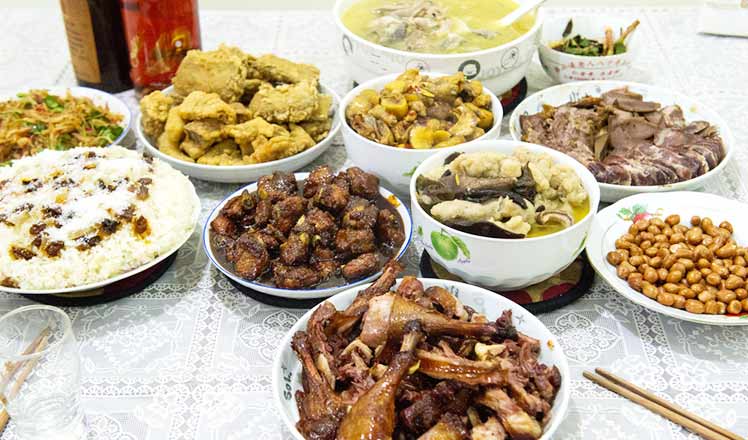2,000-year-old embroidery regains luster
Updated: 2016-02-09 15:40
(Xinhua)
|
||||||||
In the worst days, the Hunan Embroidery City Group had only two workshops and four workers.
Zeng then cut the production of traditional ornamental pieces by 80 percent and turned to manufacturing articles for daily use.
"Capes to Spain, shoes to Italy, dresses to Japan and school uniforms to the Republic of Korea," he said. "We do everything to meet the needs of our customers." Daily use commodities now account for up to 95 percent of the company's products.
After finding that local people liked roses at an exhibition in Spain, Zeng changed the traditional embroidery pattern of peony to rose.
Now the group has grown into a modern enterprise with more than 10,000 workers and an output of 1.5 billion yuan a year. Its products are sold to more than 10 countries. The export stands at about 30 million U.S. dollars last year.
The reform was not without criticism.
A Xiang Xiu master, who declined to be named, told Xinhua that it was a pity for an art form with a history of 2,000 years to be used for cheap commodities.
"I really don't want to see the brand of Xiang Xiu lose its taste," the master said. "The traditional art form is not in the museum," Zeng said.
"For the traditional handicraft art, the only way to survive is to combine art with marketing, develop new products that can meet a variety of demands nowadays," Zeng said.
Success of the companies generated job opportunities.
To provide workers for embroidery companies like Zeng's, the Hunan Embroidery Research Institute and the Hunan Arts and Crafts Vocational College helped train traditional skills.
Wu Jianmei, a 56-year-old Hunan embroidery master, has taught more than 7,000 people in the past three decades.
"From color matching to threading the needles, I taught them everything," she said. "I would like to see them create their own masterpieces, so that the art form can be passed on."
- General strike against pension reform brings Greece to standstill
- Madrid airport sounds alarm after bomb threat on Saudi plane
- Obama proposes new oil tax to fund clean transportation
- UN special envoy announces temporary pause of intra-Syrian talks
- Taliban kill 10-year-old hailed as militia hero
- Obama slams anti-Muslim rhetoric during first visit to US mosque

 Opening bell on Chinese New Year's Day
Opening bell on Chinese New Year's Day
 The world celebrates Spring Festival with China
The world celebrates Spring Festival with China
 Ditan Park temple fair embraces Chinese New Year
Ditan Park temple fair embraces Chinese New Year
 Xi Jinping grieves over Taiwan quake, vows aid
Xi Jinping grieves over Taiwan quake, vows aid
 Flash mob in monkey costumes appears in NYC to mark Chinese New Year
Flash mob in monkey costumes appears in NYC to mark Chinese New Year
 China's icebreaker 'Snow Dragon' reaches Ross Sea in Antarctica
China's icebreaker 'Snow Dragon' reaches Ross Sea in Antarctica
 Practice makes perfect for flag party on eve of Year of the Monkey
Practice makes perfect for flag party on eve of Year of the Monkey
 Spring Festival Eve dinners around China
Spring Festival Eve dinners around China
Most Viewed
Editor's Picks

|

|

|

|

|

|
Today's Top News
National Art Museum showing 400 puppets in new exhibition
Finest Chinese porcelains expected to fetch over $28 million
Monkey portraits by Chinese ink painting masters
Beijing's movie fans in for new experience
Obama to deliver final State of the Union speech
Shooting rampage at US social services agency leaves 14 dead
Chinese bargain hunters are changing the retail game
Chinese president arrives in Turkey for G20 summit
US Weekly

|

|







